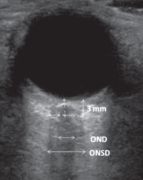Tuberculosis in Intensive Care Unit
- PMID: 34345130
- PMCID: PMC8327793
- DOI: 10.5005/jp-journals-10071-23872
Tuberculosis in Intensive Care Unit
Abstract
About 3.4% of the hospitalized tubercular patients need admission to the intensive care unit (ICU). Patients requiring ICU admission had a poor prognosis and high mortality rate (60 vs 25%) as compared to other causes of severe pneumonia. The most common indication for tuberculosis-related ICU admission is acute respiratory failure due to pneumonia or acute respiratory distress syndrome (ARDS) (with or without miliary tuberculosis) followed by septic shock with multiple organ dysfunction, adrenal insufficiency, and neurological involvement, especially tubercular meningitis. Tuberculosis patients who require admission to ICU are mostly immunocompromised [human immunodeficiency virus (HIV) coinfection] and have underlying miliary tuberculosis or disseminated tuberculosis. Pulmonary tuberculosis presenting as ARDS is a rare phenomenon, but a most common cause of admission of tuberculosis patients to ICU. Tuberculous meningitis is the most severe form of tuberculosis with mortality more than 60% and residual neurological disability in 25% cases. Tuberculosis-related septic shock has been found in only 1% of all septic shock patients admitted to ICU. Patients with tuberculosis with refractory shock should be suspected for adrenal insufficiency. A trial of physiologic stress replacement dose of hydrocortisone (200-300 mg) should be given to all critically ill patients with vasopressor-dependent shock after correcting other causes. Diagnosis and treatment of tuberculosis in critically ill patients has various challenges, namely appropriate sample collection, issues with the route of administration, drug absorption, bioavailability, dose modification in hepatic and renal dysfunction, and interaction with other drugs. How to cite this article: Chaudhry D, Tyagi D. Tuberculosis in Intensive Care Unit. Indian J Crit Care Med 2021;25(Suppl 2):S150-S154.
Keywords: Acute respiratory distress syndrome (ARDS); Miliary tuberculosis; Septic shock; Tuberculous meningitis.
Copyright © 2021; Jaypee Brothers Medical Publishers (P) Ltd.
Conflict of interest statement
Source of support: Nil Conflict of interest: None
Figures



References
-
- WHO Global Report; 2020. www.who.int/tb/publications/global_report/en/ Available from:
-
- Muthu V, Dhooria S, Agarwal R, Prasad KT, Aggarwal AN, Behera D, et al. Profile of patients with active tuberculosis admitted to a Respiratory Intensive Care Unit in a Tertiary Care Center of North India. Indian J Crit Care Med. 2018;22(2):63–66. doi: 10.4103/ijccm.IJCCM_491_17. DOI: - DOI - PMC - PubMed
LinkOut - more resources
Full Text Sources
